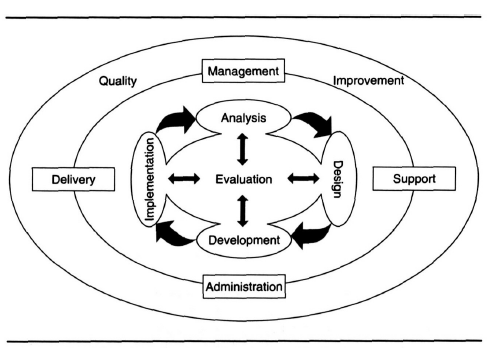The Successive Approximation Model or SAM is the latest and greatest proposal in Instructional Systems Design (ISD) getting significant fanfare by the American Society of Training and Development (ASTD). However, if you are a learning professional, leader, trainer or instructional designer you have probably heard of ADDIE as “The” instructional design model to follow for more than 60 years. ADDIE stands for Analysis, Design, Development, Implementation and Evaluation and all of these stages are essential to the development of influential and empowering learning. On the first blog of the AndragoBlog we are going to explore SAM and clear ADDIE’s bad reputation as purported by the creators of SAM. The relevance of ADDIE in today’s agile world is also discussed.
Soooo…. What’s SAM again?
SAM is the brainchild of Michael Allen, learning entrepreneur, Ph.D. and CEO of Allen Interactions . In his book, Leaving ADDIE for SAM: An Agile Model for Developing the Best Learning Experiences discusses how SAM is an optimal process for instructional design and learning facilitation because it meets four criteria:
-
-
-
-
The Process Must Be Iterative- Nothing new here, adaptations of ADDIE have supported the use of formative and summative evaluation methods in adult education for over 40 years!
-
The Process Must Support Collaboration- The book tells us there must be collaboration but, it doesn’t tell us how to achieve it. Therefore, it would be great to read about Team Building Theory
-
The Process Must Be Efficient and Effective- This is a given; nowadays instructional designers need to be resourceful and often work with limited resources and tools. This all depends on the size of your organization and your working environment.
-
The Process Must Be Manageable- This has little to do with the instructional model in place. If you have an organized method to manage your projects, it doesn’t matter whether you are using SAM or ADDIE. SAM is using many elements of ADDIE but, somehow they are made to look way easier and simpler by using SAM? Really? If you need a foundation set of skills for managing your projects, it’s worth taking a look at the Franklin Covey’s Project Management Essentials workshop.
-
-
-
ADDIE in Today’s World
If you Google it or research it through academic search engines you will find a TON of research with pros and cons about using ADDIE. Can you say the same for SAM? I going to help you out on this one and answer “Not yet” (we must have a little hope). ADDIE was established way back in the forties and for the military. ADDIE was not designed for small start-ups or large corporations in its original form. These five stages encompass everything that’s needed to ensure a well designed instructional product. It’s important to remember that ADDIE is addressing just the instructional component of a learning program. Instruction is not synonymous with learning. ADDIE has evolved over the years and has been well adapted in corporate settings but, only by those learning professionals who understand and apply the theoretical foundations of how adults learn. This is a continuous and evolving process, not a matter of sticking to what was established more than 60 years ago.
What was that? A Picture is Worth a Thousand…
Here’s ADDIE depicted by Allen in a SlideShare presentation
Here’s the SAM model as depicted in his book.
Below is ADDIE as revised by the Air Force in 2001 (not much of a difference is there?)
About Dr. Allen and his e-learning company…
Aside all the promotional work Allen Interactions (AI) is doing to make SAM an alternative to ADDIE, Dr. Allen’s involvement in the creation of significant learning authoring tools such as AuthorWare is impressive. His company definitely believes in creativity and innovation in support of learning design and there are not too many business organizations that embrace this approach. I have not personally experienced or evaluated AI’s e-learning courses but it’s obvious he’s providing state-of-the-art immersive and interactive learning experiences with use of Adobe Flash and HTML5. It’s also evident that his products are learner-centered and his designs are conscientious about the learner’s experience.
Here’s the most resonant part of Allen’s book in my opinion:
“Good instruction is inspirational. It captures both the power of knowledge and skill as well as the joy of becoming competent. Good learning experiences aren’t just about facts, they are about becoming a more proficient, capable, and valuable person.”
Dr, Michael Allen, Leaving ADDIE for SAM: An Agile Model for Developing the Best Learning Experiences(2012).
DISCLAIMER
As a disclaimer, I’m in no way, shape or form involved with any of the aforementioned entities and companies above. I’m an Instructional Designer by day and a technically dangerous interactive learning wizard all of the time!



